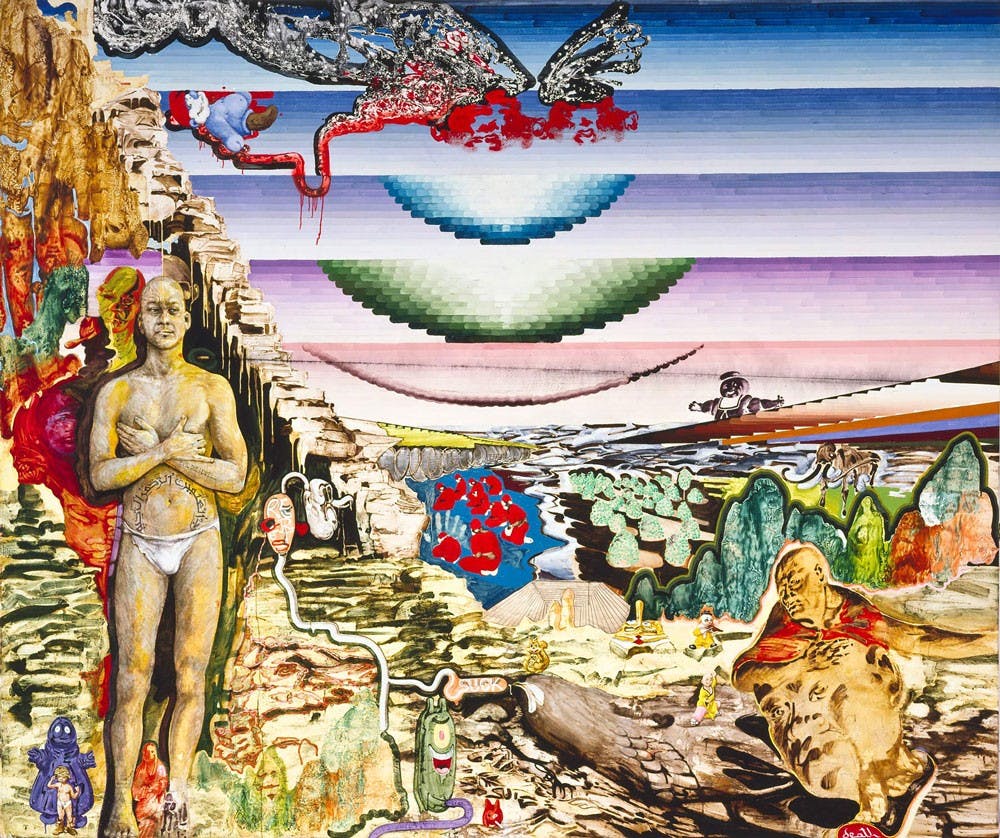World-renowned artist Attila Richard Lukacs sparked audience conversation when he presented his work, focused on the world of homoeroticism and the narratives behind it, at Hallwalls Contemporary Arts Center this past Tuesday evening.
The event was sponsored by the Department of Visual Studies at UB and the Leslie-Lohman Queer Art Lecture Series provided free admission to Lukacs’ art.
“This series is dedicated to queer art and artists, showcasing the most significant contemporary queer artists with an emphasis on exploring the relationship between their sexuality and their art,” said Natalie Fleming, resource curator for UB’s Department of Art.
Fleming went on in explaining how the multi-disciplinary work brings together gay and lesbian historical, social and political issues that mainstream art venues still shy away from.
The Canadian artist’s works have traveled the globe with displays in the United States, Europe, Japan and Mexico. Lukacs displays a wide range of artistic mastery from contemporary to traditional. Many of his works were life-sized paintings. Lukacs used many mediums in creating his art, including oil, sketch, digital, enamel, bitumen and polyurethane.
Jonathan D. Katz, Director of UB’s Visual Studies Ph.D. program and curator of the series, questioned why Lukacs is more famous in Europe than in the United States. He said this may be partly due to the homophobia in American culture, as social constructs may impede his fame.
Lukacs’ contemporary art emphasizes the sexualized body, a metaphorical representation of the body as meat. It is often layered with common motifs. His use of monkeys depicts the artist’s playful interpretation of the outside world. This symbolism is derived from miniature painters of India and Middle East.
Other pieces dealt with challenging the notion of a militarized body (and gender). Lukacs embellishes masculinity in many of his works, as he did in his series on gay skinheads.
He uses subjects from a military catalogue to demonstrate societal tension between ideas of homosexuality and the exaggerated masculinity of the military.
The red handprint commonly found in Lukacs’ work, symbolizes the guilty hands of government in the context of HIV. It could also be considered a depiction of the painter’s soul spilling on the canvas.
Lukacs’ most controversial work has an explicit display of homoerotic sexuality. Using nude male models as art subjects elevated his polaroids from pornographic muse to art.
Many of his explicit works depicted a homosexual paradise, appropriated by the historic masterpieces and elements of notable renaissance painters like Caravaggio.
Lukacs captures the aesthetic of the male body, making the homoerotic dimension naturally seductive.
“There are many layers,” said UB history professor Victoria Wolcott. “You can constantly siphon more and more meaning [from Lukacs’ art].”
Paintings usually have a lot of loaded dialogue. During the presentation Lukacs said, “If you have a dialogue that goes to purpose, [versus] a dialogue that goes to bigotry, it makes all the difference.”
Another of Lukacs’ installation series consisted of a dark canvas with the moon as the center of projection. The surrounding images varied, but stayed consistent with his original influences of sexuality and religious symbolism.
Lukacs also created self-portraits that are uniquely surreal. They dove into the dimensions of his narrative. This is suggested by the artistic emphasis on certain attributes of sexuality, state of mind and libido.
His art was usually abstract, allowing a loose interpretation of ideas and concepts.
One notable piece Lucifer and Jupiter illustrates a collision of good and evil. The two concepts are interchangeable in that both Jesus (Jupiter) and Lucifer represent the morning star. This piece uses negative space, realistic depictions of the human anatomy, traditional art form and rich color.
Lukacs’ newest work, entitled Allegory of Love, is riddled withpersonal symbolism such as the tattoo of a late friend that is present on one the male figures in the painting. Similar to his older works, Lukacs continues to distort the lines between what falls under socially acceptable and taboo.
Giovanni Gaglianese is an arts staff writer. Arts Desk can be reached at arts@ubspectrum.com.





